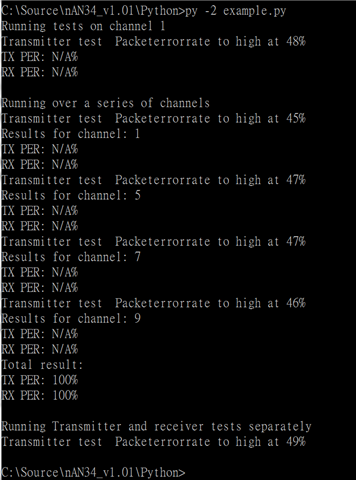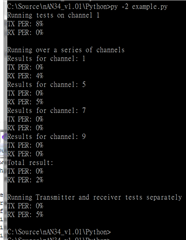Hi Sir,
For EN 300 328 V2.1.1, I reference below setting.
.
IC: 51822
PCB: nRF51-DK x 2
SDK: SDK_12.3.0\examples\dtm\direct_test_mode\pca10028\blank
I follow above link and assign the "RADIO_MODE_MODE_Nrf_250Kbit" to "m_radio_mode" in "ble_dtm.c"
# ble_dtm.c
static uint8_t m_radio_mode = RADIO_MODE_MODE_Nrf_250Kbit;//RADIO_MODE_MODE_Ble_1Mbit;
As download nAN34_v1.01.zip, I modify the COM port to examp.py, and run the command as below.
py -2 example.py
But I got the high packet loss as show below.
Any configuration I miss for 250K test? (1M link speed is OK, TX/RX PER is 0%)
Thank you.
BRs, Han




